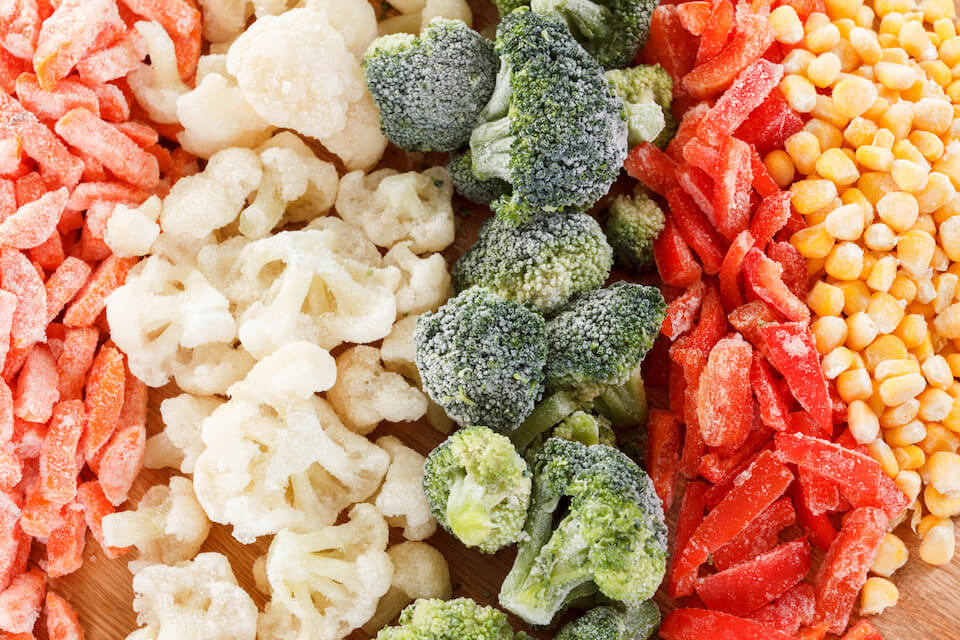
Did you know you can make your own survival food? Freeze-drying is a great way to store survival food. The best part? You can do it yourself, from the comfort of your home. Increase your self-reliance and expand your emergency food supply. Learn more about freeze-drying below.
Why Should I Choose Freeze-Drying?
Freeze-drying is a long-term food preservation process. It helps foods retain flavor and nutritional value, often much better than other methods can. Sometimes, freeze-drying needs specialized equipment, like a vacuum sealer. You can also use dry ice or a regular freezer at home, but the process takes much longer. For easy, fast results, pre-freeze your food in the freezer, then use a high-quality freeze-dryer to preserve your foods. When properly sealed, some freeze-dried food can be stored for up to 25 years.
Freeze-dried food and dehydrated food are not the same. Freeze drying vs. dehydrating your survival food has a completely different process. Plus, dehydrated food can have a shorter shelf life. Here’s another difference: you can freeze-dry fully prepared meals. This can save you valuable time and energy when using your emergency food. You can also freeze-dry individual ingredients to cook with in the future. You’ll simply need to rehydrate some of your ingredients before you cook (more on this below).
8 Best Foods to Freeze Dry at Home
1. Fruits
Freeze-drying removes water from foods. Fruit contains lots of water, so it’s perfect for freeze-drying. You can eat freeze-dried fruit without rehydrating, too.
2. Vegetables
Just like fruit, the high water content in vegetables works well with freeze-drying. Freeze-dried veggies work great as a healthy snack or for cooking.
3. Meat and Fish
A variety of freeze-dried meat can add protein to your survival stash. For larger cuts, slice your meat or fish into small chunks before freeze-drying. For ground meats like beef, chicken, or sausage, cook your meat first. Pat meat dry with paper towels before you freeze-dry it. Sliced deli meats work great, too!
4. Desserts and Treats
Did you know? Many baked goods and candies can be freeze-dried. Brownies, cheesecake, and cookies work well. You can freeze-dry hard candies to extend their shelf life, too.
5. Eggs
For maximum flexibility, freeze dry raw eggs. Then, you can cook or bake the rehydrated eggs however you need to in the future.
6. Dairy Essentials
Cheese, sour cream, cream cheese, and even ice cream sandwiches can be freeze-dried. Just don’t freeze-dry butter. Butter has a high-fat content, which means it won’t keep after freeze-drying.
7. Broths and juices
Freeze-dry broths and fruit or vegetable juices. These can add flavor and variety to your survival meals, like soup or pasta.
8. Prepared meals
You don’t have to limit yourself to freeze-drying ingredients. You can freeze-dry full meals, too! Lasagna, casseroles, and soups are all great meals to freeze-dry.
Foods You Shouldn’t Freeze-Dry
Freeze-drying can work great for many of your favorite snacks and cooking staples. But some foods aren’t good for this storage method. Foods high in fat or sugar, like peanut butter, pure chocolate, and jellies, don’t typically keep when freeze-dried.
How to Store Freeze-Dried Foods
There are several easy methods for storing freeze-dried foods. A standard mason jar lets you can and seal dried fruit or veggies. Sealed mylar bags can help your food last up to 25 years. Vacuum-sealed plastic bags also work well. Whatever you choose, make sure your storage container is airtight. Consider using oxygen absorber packets in your packaging, too. These can help prevent the spoilage of long-term freeze-dried foods.
Rehydrating Freeze-Dried Food
Some freeze-dried foods are ready to be eaten straight from your food storage container. However, you’ll need to add water to some foods (like freeze-dried meat) before eating them. Here are a few easy methods for reconstituting freeze-dried food:
- mist with water from a spray bottle
- wrap in a damp paper towel and wait a few minutes
- soak food items in water for several minutes
Your method of rehydration will depend on what food you have. It’s always a good idea to start with less water. Add more as needed. This way, your food won’t get soggy from too much water at once.
Freeze-Dried Food: Easy to Add to Your Emergency Stash
Whether you want to freeze-dry food at home or purchase quality pre-made foods, 4Patriots is here for you. Shop freeze-drying supplies like our Home Freeze-Drying System, or find ready-to-eat foods, including freeze-dried meats, fruits, and desserts.

